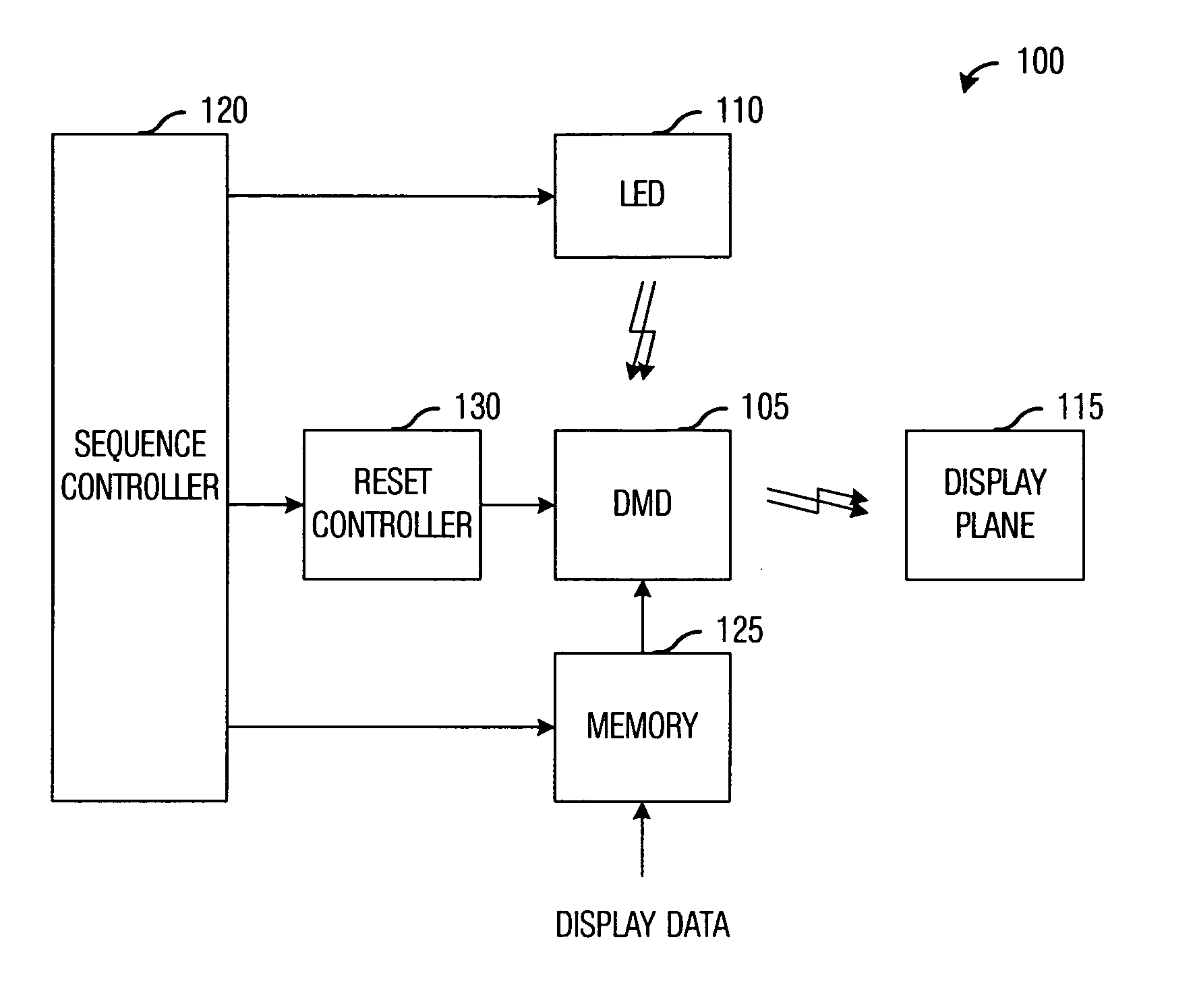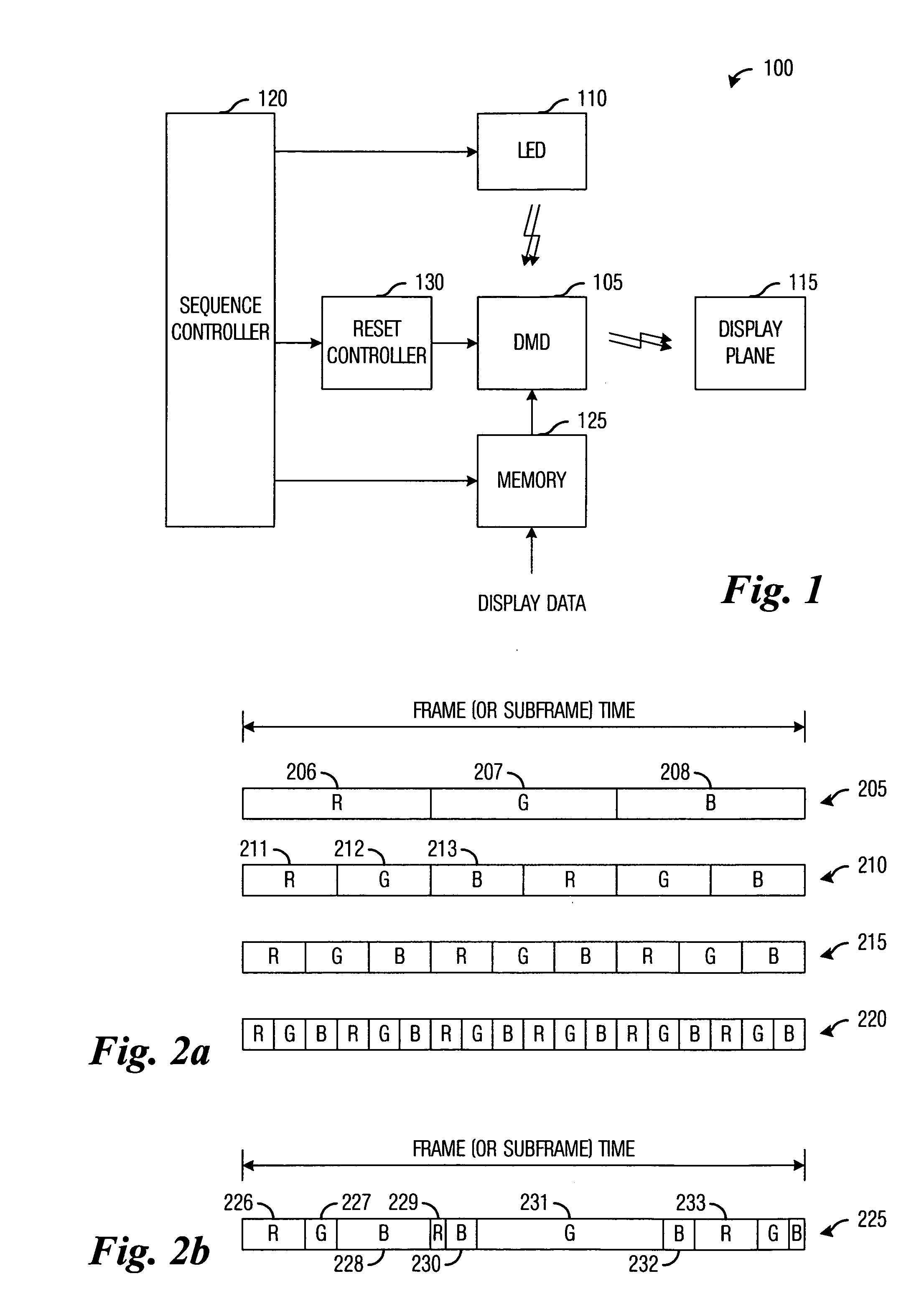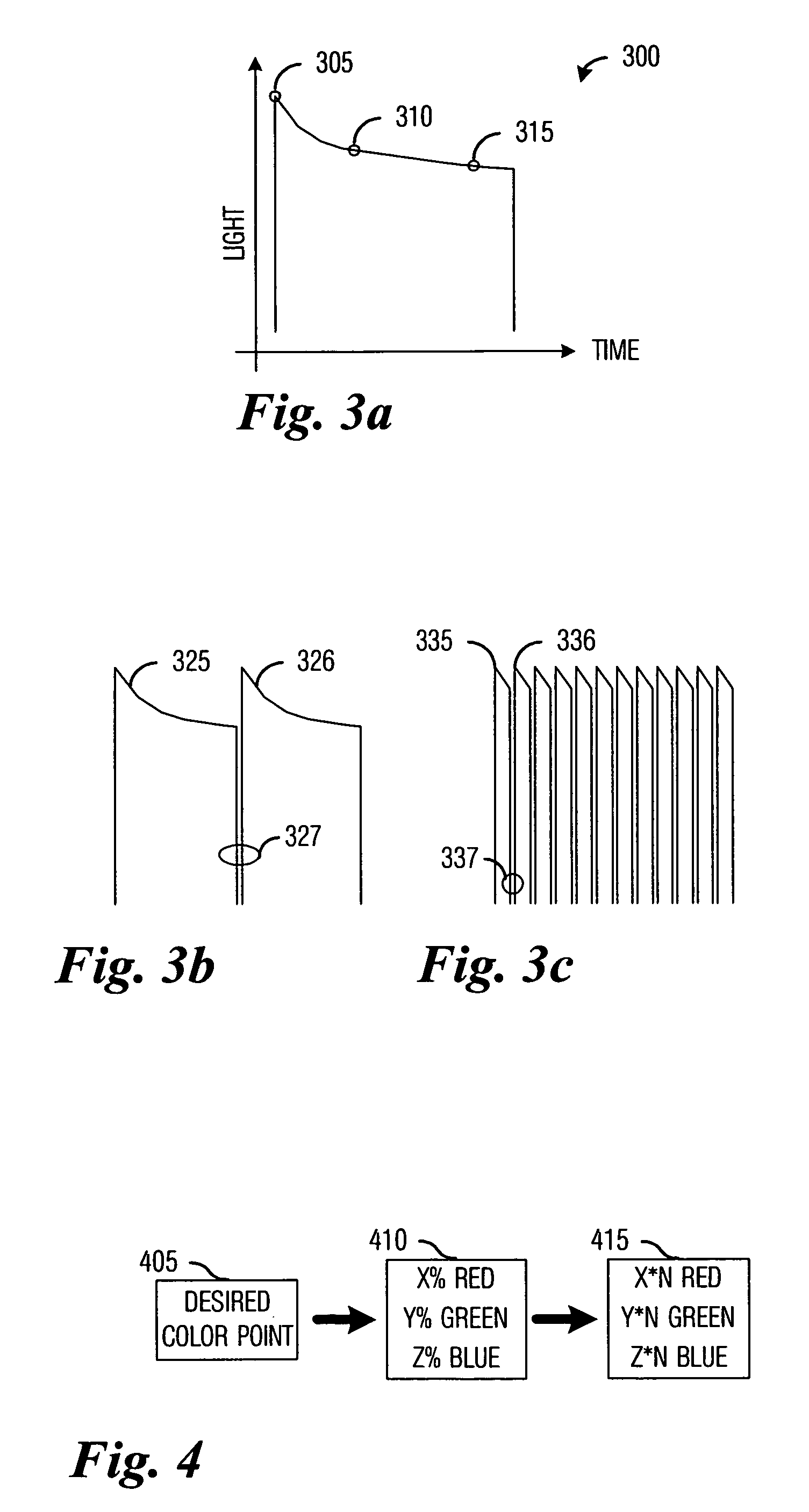Sequence design in a display system
a display system and sequence design technology, applied in the field of sequence design can solve the problems of difficult to change the chromatic nature of the light being used in the display system, the on/off cycle time of high-intensity light sources is very slow, and the effect of reducing artifacts and negative impact on image quality
- Summary
- Abstract
- Description
- Claims
- Application Information
AI Technical Summary
Benefits of technology
Problems solved by technology
Method used
Image
Examples
Embodiment Construction
[0021] The making and using of the presently preferred embodiments are discussed in detail below. It should be appreciated, however, that the present invention provides many applicable inventive concepts that can be embodied in a wide variety of specific contexts. The specific embodiments discussed are merely illustrative of specific ways to make and use the invention, and do not limit the scope of the invention.
[0022] The present invention will be described with respect to preferred embodiments in a specific context, namely a spatial light modulator (SLM) display system wherein a digital micromirror device (DMD) functions as the SLM and light-emitting diodes (LED) are used as the rapidly switching light source. The invention may also be applied, however, to SLM display systems that make use of alternate SLM technology, such as liquid crystal displays (LCD), deformable mirrors, micro electrical machine systems (MEMS), liquid crystal on silicon (LCoS), and so forth, as well as SLM d...
PUM
 Login to View More
Login to View More Abstract
Description
Claims
Application Information
 Login to View More
Login to View More - R&D
- Intellectual Property
- Life Sciences
- Materials
- Tech Scout
- Unparalleled Data Quality
- Higher Quality Content
- 60% Fewer Hallucinations
Browse by: Latest US Patents, China's latest patents, Technical Efficacy Thesaurus, Application Domain, Technology Topic, Popular Technical Reports.
© 2025 PatSnap. All rights reserved.Legal|Privacy policy|Modern Slavery Act Transparency Statement|Sitemap|About US| Contact US: help@patsnap.com



